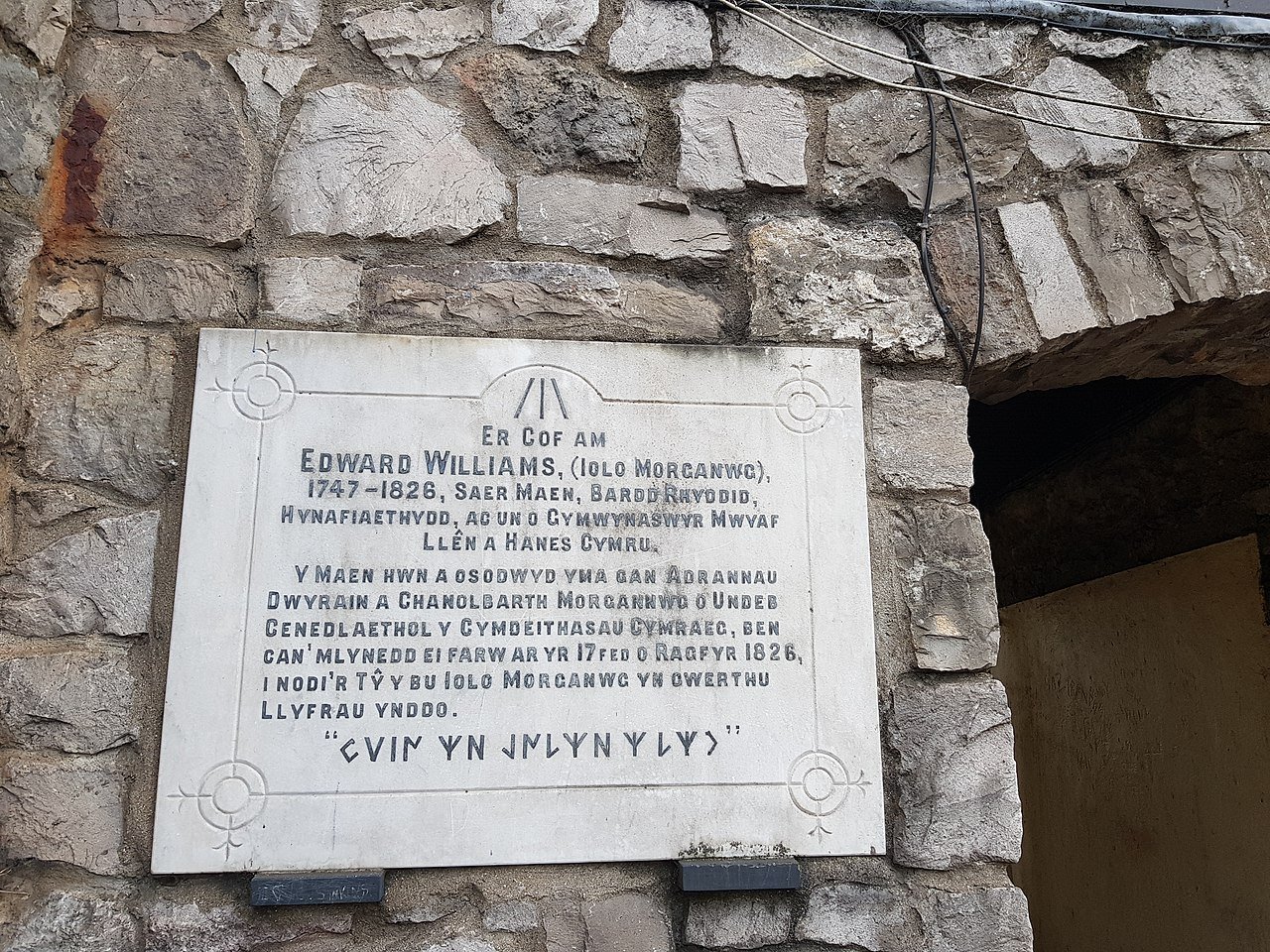

In the 18th century, a Welsh scholar, Edward Williams (also called Iolo Morgannwg), claimed that the ancient Celts’ druids and bards used an alphabet called Coelbren. The similarities between this script and ancient Greek writing are unmistakable.
However, many scholars today argue that Edward Williams invented this writing system and tried to pass it off as legitimate. They say that Williams himself took inspiration from the Greek alphabet and created Coelbren as a forged writing system of the ancient Celts. What does the evidence show?
According to the 18th-century scholar Edward Williams, better known as Iolo Morgannwg, Coelbren was a writing system used by the ancient Celts. In particular, he claimed that it was the alphabet of the ancient bards and druids of Britain and Gaul.
The letters of Coelbren look similar to Norse runes but are also very similar to ancient Greek letters. They are particularly similar to the Archaic Greek alphabet. This existed between the ninth century and the fifth century BCE.
The druids of the ancient Celts allegedly wrote these characters on wooden sticks. These sticks were held in an abacus-like structure, allowing several sticks to be held simultaneously.
In the 18th and 19th centuries, scholars accepted Edward Williams’ claims about Coelbren essentially without question. Schools even showed the Coelbren alphabet on information boards and taught it to students. However, particularly in the 20th and 21st centuries, scholars have generally rejected it as a forgery by Williams himself.
Nevertheless, not all researchers agree with this assessment. One of the main pieces of evidence that some commentators point to in support of Coelbren’s authenticity is the testimony of Julius Caesar in Bello Gallico, written in the first century BCE.
Caesar famously fought extensively against the Celts of Gaul, and also against the Britons. In one passage of his first-hand account, he describes the druids – the religious class of the Celts. Regarding them, he wrote the following:
“They are said there to learn by heart a great number of verses; accordingly some remain in the course of training twenty years. Nor do they regard it lawful to commit these to writing, though in almost all other matters, in their public and private transactions, they use Greek characters.”
According to this, the Celts’ druids did not write down the verses they learned as part of their religious education. However, they did use Greek characters for their “public and private transactions”. Given the similarities between Coelbren and the Greek alphabet, many commentators have used this as evidence for the authenticity of Coelbren.
Although Caesar was indeed describing the druids of the Celts in Gaul, he also explained that they studied in Britain. Therefore, writing with Greek characters would have been known in Britain too, not just in Gaul.

There is a major issue with this piece of evidence regarding Coelbren’s authenticity. The Greek characters from Caesar’s era significantly differed from those of the Archaic Greek alphabet. While the letters of Coelbren are similar to Archaic Greek, they show little, if any, resemblance to the style used during Caesar’s time.
Therefore, it is wholly illogical to conclude that Caesar was talking about Coelbren when he referred to the druids using Greek characters.
Furthermore, we do not need to speculate about the appearance of the Greek characters used by the Celts. Archaeologists have uncovered numerous Celtic inscriptions from Gaul that have Greek characters.
As expected, these Greek characters are similar to those of the Greek alphabet of Caesar’s time. The Celts were not using an old version of Greek letters, which Caesar would probably not have even been able to recognize as such.
However, this is not the only possible evidence for the Coelbren alphabet nor the only relevant evidence uncovered by archaeology. Along with finding inscriptions showing that the Celts used Greek letters, many inscriptions also show that they used Latin characters.
However, the form of the Latin alphabet that the Celts of Britain and Gaul used was very different from the normal version, which most people are familiar with. The Latin letters that the Celts used were very similar to Coelbren.
Almost every single one of the letters in these Celtic inscriptions resembles its equivalent letter in the Coelbren alphabet. Could this script have been the origin of Coelbren?
If so, we would have to conclude that the Celts of the Roman Era continued using this particular form of the Latin script in their practice of writing on sticks (known to be historical), while adopting a more recognisable form of Latin letters on their stone inscriptions.
This is possible, although there is little direct evidence of it. However, there is at least one apparent example of some potential evidence. The inscription features an uncommon variant of the letter ‘s’. This stone inscription, found in Britain and dated to the sixth century CE, preserves the name of a certain Justin.
However, the ‘s’ in the name is written as a vertical line with a diagonal arm extending upwards to the right. This is identical to the ‘s’ in Coelbren. It is also similar to the type of ‘s’ used by the Celts in the Roman Era.
Crucially, other inscriptions in medieval Britain show that the Britons also used a more recognisable form of the letter ‘s’. Therefore, could this indicate that two different forms of the Latin alphabet existed concurrently in Britain after the Roman Era?
Certainly, this unusual ‘s’ indicates that the Britons were familiar with more than just one type of Latin alphabet. If so, this alternative form could plausibly be the origin of Coelbren. This would make sense, given that it is more similar to Coelbren than the Archaic Greek alphabet is.
Nevertheless, the Greek alphabet would still be the ultimate origin of Coelbren, since the Greek alphabet is what led to the Latin alphabet.
